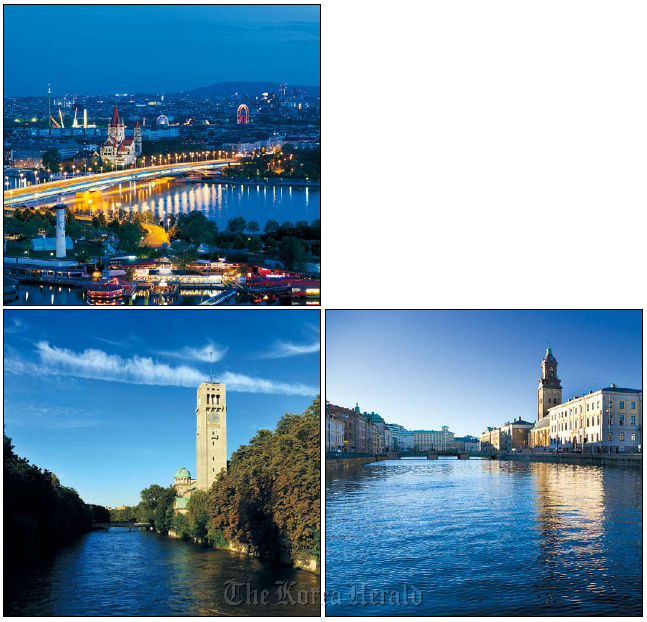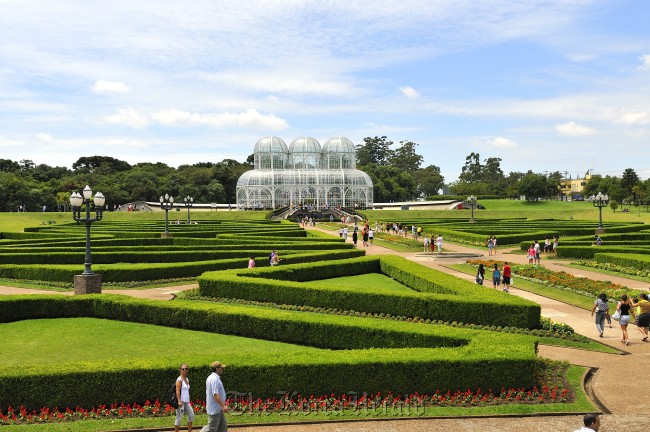
The following is the second in a series of articles on design prepared in anticipation of the Herald Design Forum on Sept. 19-21. ― Ed.
Curitiba, a mid-sized city in southern Brazil, became the latest example of sustainable urban planning worldwide with its innovative and strategic urban renovation.
Its innovative transport system has been a source of inspiration for neighboring cities such as Bogota, Colombia and Mexico City, and also for Seoul.
Today’s urban design aims to enhance the wellbeing of citizens, improving urban infrastructure and make neighborhoods more interconnected, according to Kim Seung-hoy, an architecture professor of Seoul National University and head of architect firm KYWC Architects.
“Future cities should become more compact. It’s important to improve development without sprawl,” said Kim. “And urban design should function as a tool to improve lives of citizens, not be used for the sole purpose to beautify the city.”
Curitiba, a mid-sized city in southern Brazil, became the latest example of sustainable urban planning worldwide with its innovative and strategic urban renovation.
Its innovative transport system has been a source of inspiration for neighboring cities such as Bogota, Colombia and Mexico City, and also for Seoul.
Today’s urban design aims to enhance the wellbeing of citizens, improving urban infrastructure and make neighborhoods more interconnected, according to Kim Seung-hoy, an architecture professor of Seoul National University and head of architect firm KYWC Architects.
“Future cities should become more compact. It’s important to improve development without sprawl,” said Kim. “And urban design should function as a tool to improve lives of citizens, not be used for the sole purpose to beautify the city.”

The urban revolution in Curitiba, orchestrated by architect-turned-mayor Jamie Lerner, transformed the city into a sustainable and green city, addressing the city’s old problems, such as litter with a new recycling system and traffic jams with an integrated public transport system.
It has also made the city more livable with more than 30 municipal parks and woods as well as dozens of squares, playgrounds and gardens.
Amid the trend to make cities greener and more sustainable, Seoul has chosen a new direction in its city design.
“Urban design was something used to raise the competitiveness of the city at a global level, which often caused conflicts with individual citizens for the sake of their wellbeing. But now the purpose of the design changed ― something that will directly contribute to enhancing the lives of citizens,” said Han Jung-hun of the design policy division of the Seoul Metropolitan City Government.
“What we are focusing on is urban design that addresses crime prevention, upgrades recycling methods and transforms each community into safer places full of vitality,” said Han.
“Design also maximizes its influence when incorporated into major fields that have a direct impact on citizens such as welfare, economy and the environment.”
Seoul’s design plan aims to decrease crime, create a friendly environment for the elderly and the disabled and adopt upcycling to convert recycled materials and products into useful products with high environmental value.
Furthermore, the city plans to upgrade underprivileged towns based on ideas and proposals from local residents.
The community-driven planning will include major upgrades in street network, public community centers that facilitate communication and exchanges among residents.
“There will be a fundamental change in crime rates when the city becomes a livable place and improves the lives of citizens,” said Kim.
The new design plan is slowly changing the landscape of the city as well. Opinions regarding public design can be divided.
“When a new public building rises, people talk about whether the design is good or bad,” said public design professor Oh Tae-hwan of Hanyang University, referring to the new Seoul City Hall building, whose design has been controversial.
But Oh said the building is also part of the city government’s plan to make the city more sustainable and a greener place.
“Design is something that is easily judged by viewers. But sometimes, the design that looks so familiar to your eye could remain dull and boring in the end. The design that is unfamiliar and something futuristic evolves,” said Oh.
By Lee Woo-young (wylee@heraldcorp.com)


![[Exclusive] Korean military set to ban iPhones over 'security' concerns](http://res.heraldm.com/phpwas/restmb_idxmake.php?idx=644&simg=/content/image/2024/04/23/20240423050599_0.jpg&u=20240423183955)

![[Graphic News] 77% of young Koreans still financially dependent](http://res.heraldm.com/phpwas/restmb_idxmake.php?idx=644&simg=/content/image/2024/04/22/20240422050762_0.gif&u=)



![[Pressure points] Leggings in public: Fashion statement or social faux pas?](http://res.heraldm.com/phpwas/restmb_idxmake.php?idx=644&simg=/content/image/2024/04/23/20240423050669_0.jpg&u=)









